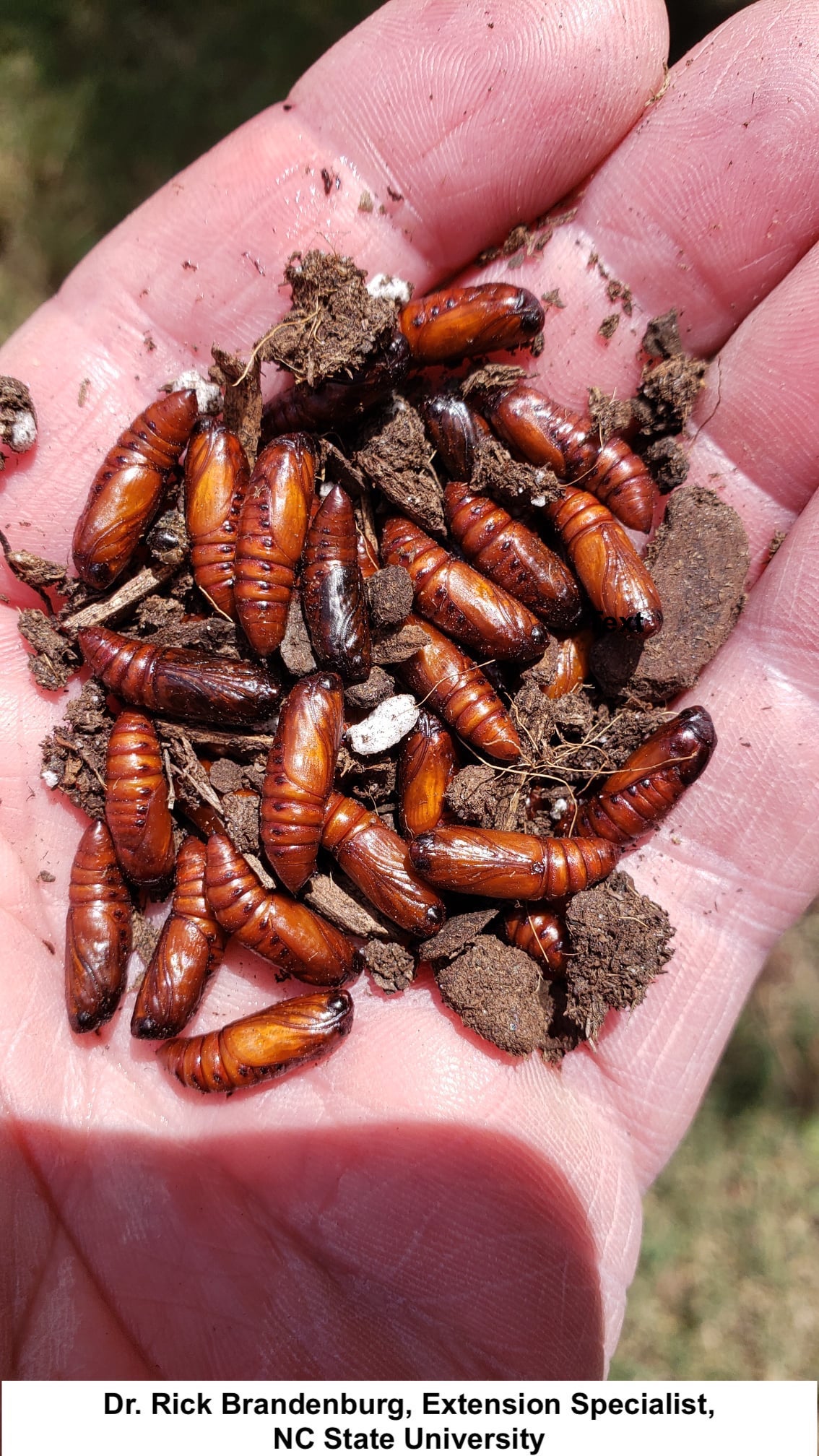Fall Armyworms on the March
go.ncsu.edu/readext?819519
en Español / em Português
El inglés es el idioma de control de esta página. En la medida en que haya algún conflicto entre la traducción al inglés y la traducción, el inglés prevalece.
Al hacer clic en el enlace de traducción se activa un servicio de traducción gratuito para convertir la página al español. Al igual que con cualquier traducción por Internet, la conversión no es sensible al contexto y puede que no traduzca el texto en su significado original. NC State Extension no garantiza la exactitud del texto traducido. Por favor, tenga en cuenta que algunas aplicaciones y/o servicios pueden no funcionar como se espera cuando se traducen.
Português
Inglês é o idioma de controle desta página. Na medida que haja algum conflito entre o texto original em Inglês e a tradução, o Inglês prevalece.
Ao clicar no link de tradução, um serviço gratuito de tradução será ativado para converter a página para o Português. Como em qualquer tradução pela internet, a conversão não é sensivel ao contexto e pode não ocorrer a tradução para o significado orginal. O serviço de Extensão da Carolina do Norte (NC State Extension) não garante a exatidão do texto traduzido. Por favor, observe que algumas funções ou serviços podem não funcionar como esperado após a tradução.
English
English is the controlling language of this page. To the extent there is any conflict between the English text and the translation, English controls.
Clicking on the translation link activates a free translation service to convert the page to Spanish. As with any Internet translation, the conversion is not context-sensitive and may not translate the text to its original meaning. NC State Extension does not guarantee the accuracy of the translated text. Please note that some applications and/or services may not function as expected when translated.
Collapse ▲(Adapted from the article “Fall Armyworms Invade” by Minda Daughtry, Agriculture/Horticulture Agent, N.C. Cooperative Extension in Lee County)
Over the past several weeks fall armyworms (Spodoptera frugiperda) have been on the march. These insects feed on turf and pasture in large “armies” creating increasing areas of brown grass as they feed. The damage they create can be severe for newly sodded or sprigged areas, and late feeding into fall can result in little time for recovery of turf before winter.
Fall armyworms are approximately 1-1½ inches long, depending on the growth stage, and can vary in color from a green to mottled brown, to almost black. Fall armyworms have wide black stripes running down each lateral side of the body. Sometimes, you will be able to distinguish four black dots on the dorsal (back) side of each segment of the abdomen and a light-colored, upside-down “Y” marking on the head capsule.
Fall armyworms have a very wide host range but generally prefer plants in the grass (Poaceae) family, low-growing herbaceous growth, and woody shrubs. Most grasses, including coastal bermudagrass, fescue, ryegrass, bluegrass, Johnsongrass, timothy, corn, sorghum, Sudangrass, and small grain crops, are subject to infestation. Hot, dry weather can intensify fall armyworm problems, especially when egg-laying adults lay their eggs in irrigated, green turf. At least some cultivars of all warm-season grasses are susceptible. Cool-season grasses like tall fescue are very favorable for fall armyworm growth and development too, and do not regenerate as readily as the stoloniferous grasses.
Fall armyworm adults migrate northward every year from southern overwintering areas. Adult armyworm moths are active at night and females lay eggs in masses of 50 to several hundred. These night-flying moths are attracted to lights and to lighter colored surfaces. Early August is a good time to start monitoring for egg masses on plants, objects, and buildings bordering turfgrass. As soon as the eggs hatch, caterpillars will immediately start feeding on nearby turf so early detection is essential to counteracting severe armyworm damage. Given the large number of insects present this year, additional damage might still be possible as a new generation starts to develop. You should continue to monitor for damage through September.
Damage from small larvae may at first look like skeletonizing, but as the worms grow, the entire leaf is consumed. Large numbers can consume all above-ground plant parts, and they are capable of killing or severely retarding the growth of grasses. This species may migrate in large numbers in search of new areas in which to feed. While there are several products that can be used to manage armyworm populations, small larvae are easier to control. Larvae are more active early and late in the day, spending the hotter hours where it is cooler down near the soil. They will feed for 2 to 3 weeks before pupating in the upper soil/thatch layer and will not be susceptible to insecticides at this point. Moths emerge 10-14 days later. The entire life cycle from egg to adult moth takes about 28 days in the warm weather of August and September. There are several overlapping generations.
If there is any doubt about whether worms are present, pour soapy water on the grass (1/2 oz. dishwashing soap/gallon water) to bring them up. Heavily infested turf will also have visible greenish-black fecal pellets on the soil surface. Other signs of armyworm infestations may include birds or even the paper wasps flying over yards as they feed on them. Because armyworms are most active late in the day and at night, apply the pesticide as late in the day as you can. Cutting the grass prior to application may improve control, but do not cut grass for 1 –3 days after application. Read and follow all label directions when using pesticides.
For more information on controlling these insects refer to the NC State Extension turf note, Fall Armyworms in Turf. You can also contact Daniel Simpson at 252-745-4121 or daniel_simpson@ncsu.edu.





